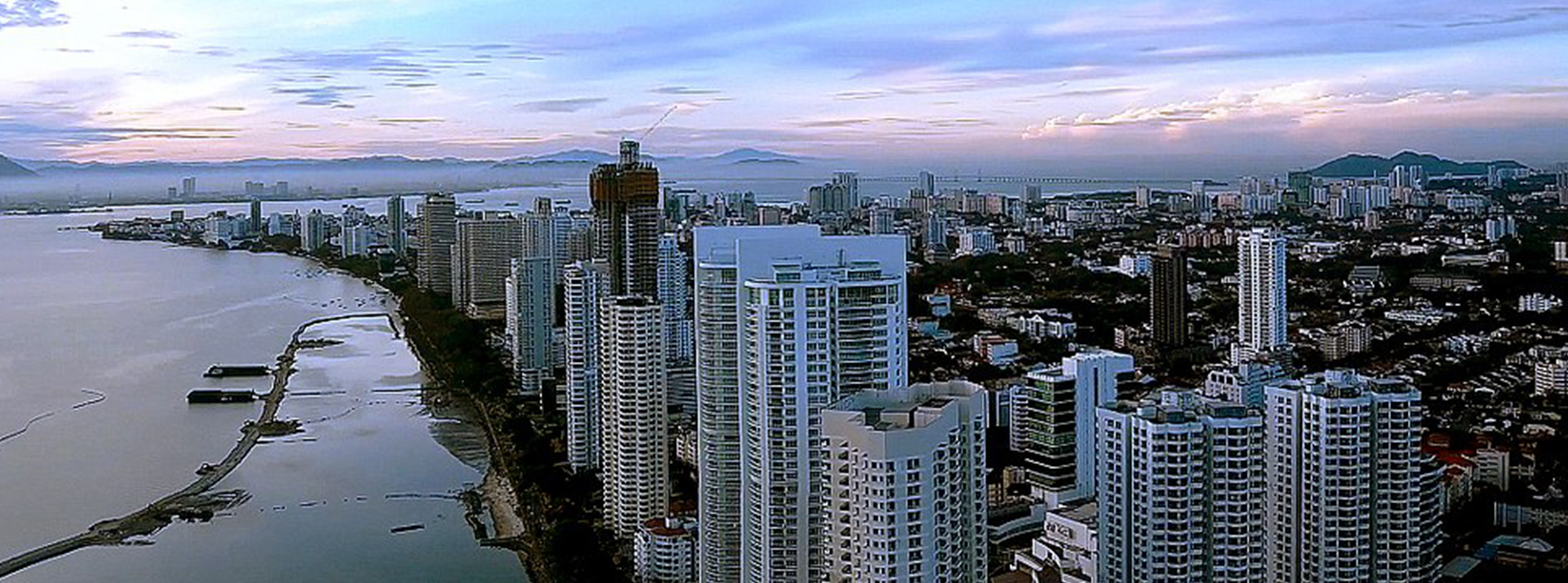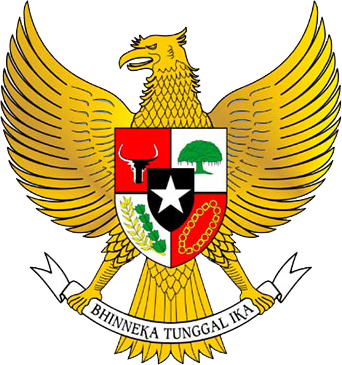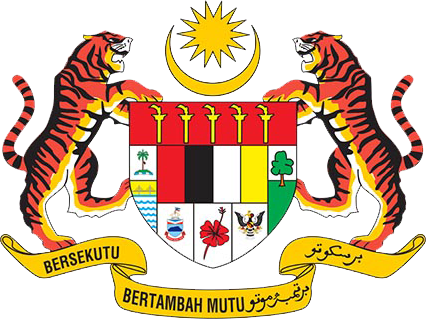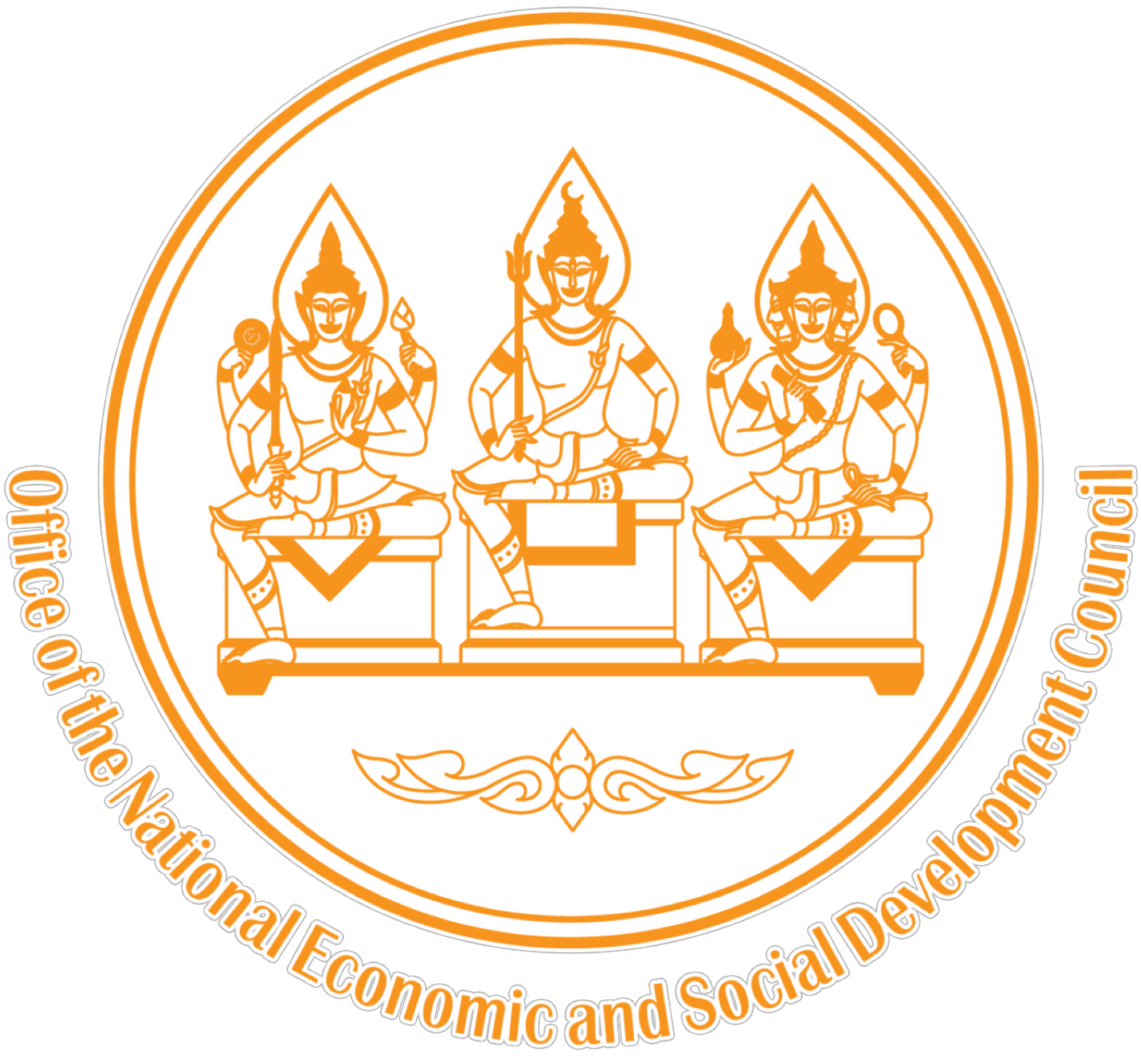PENANG
STORY ABOUT PENANG
Penang often referred to as the Pearl o the Orient is one of the most picturesque and romantic cities of the East. Located on the north-west coast of Peninsular Malaysia, Penang received its name from the Pinang or Betel Nut tree once commonly found on the island. Established as the first British trading post in the Far East in 1786, Penang today is a bustling metropolis reflecting a uniquely exotic blend of East and West.
The state of Penang consists of Penang Island and a strip of land on the mainland known as Province Wellesley or Seberang Prai. The two land masses are linked by the Penang Bridge, one of the longest in Asia at 13.5km. Penang is also connected by a ferry service to the mainland.
On Penang island is the capital Georgetown, a city steeped in history and tradition yet sparkling with progress and modern development. Certain sections of Penang present a quaint picture from the past where narrow side streets, trishaws, temples and traders plying their goods, seem to belong to a forgotten era.
Penang is a shoppers’ paradise for goods old and new, at bargain prices. There is a wide, competitive choice of cameras, electronic and electrical goods, clothing, batik, souvenirs, antiques and knick-knacks. The island also boasts some of the stall favourites like nasi kandar, char-kway teow and Penang laksa, which is a different variety from that found in others states.
He soon established Georgetown and later acquired a strip of land on the mainland adjacent to the island which became known as Province Wellesley Light established Georgetown as a duty-free port and encouraged settlers to claim as much land as they could clear the virtually uninhabited island had a population of 10,000 people by the turn of the century. In 1805 Penang become a dependency of Bengal It was later elevated to become a fourth Indian.
Residency government with an administrative structure similar to that of Madras and Bombay. In1826 Malacca and Singapore were transferred to Penang and the Residency of the Straits settlements was formed. The economy boomed and Georgetown developed the first English language school in South-East Asia in 1816.
PLACES OF INTEREST
1) Georgetown
Georgetown on the north-east part of the island and Penang’s colorful, bustling capital, still retains a strong Chinese flavour with its old shophouses selling traditional goods and its numerous temples, coffeeshops and market-places.
Georgetown is a compact city and most sights are easily seen on foot or by hiring a trishaw. The old colonial part of town is near Fort Cornwallis while the financial centres is on Lebuh Pantai, the main street. There are many grand colonial buildings here including banks and old trading offices.
Penang was one of the oldest British settlements in Asia. Jalan Penang is the main shopping district while Lebuh Chulia contains many restaurants, small hotels and resthouses. Many places of interest are highlighted in a walking tour that also includes some temples and mosques in Chinatown.
2) Chinatown
This old part of Penang in the heart of Georgetown bustles with frenetic activity, especially during festivals. There are numerous shops conducting traditional businesses. Chinatown also contains several Chinese and Hindu temples and mosques. It is good fun to wonder around and take a trishaw ride. There is always something going on from temple ceremonies to morning vegetables markets and night bazaars. Jalan Penang and Jalan Campbell are the shopping areas with air-conditioned shops, while the old fashioned Chinese shophouses can be found on Lebuh Chulia. Handicraft and antique shops are located at Lebuh Farquhar.
3) Fort Cornwallis
Fort Cornwallis located near the spot where Francis Light first stepped ashore in 1786, is a good place to start a tour of the colonial district. Originally a wooden fortress, it was later erected in stone by convict labour between 1808 and 1810. Several old cannons on the battlements, originally cast by the Dutch were stolen by pirates before ending up at the fort. Some believe in its procreative powers and women often place flowers in it. The powder magazine underneath the cannon houses a small museum chronicling the history of the fort and Penang. While only the outer walls of the fort stand, within there is a park, souvenir shops amphitheater and food stalls.
4) St. George’s Church
Located in Lebuh Farquhar to the east of Fort Cornwallis, this Anglican Church is the oldest Anglican church in the country. A well proportioned, stately building, it has a marble floor and towering spire. It was built in 1818 by convicts and at the entrance is a memorial canopy in remembrance of Captain Francis Light, when he first landed in Penang.
5) Penang Museum and Art Gallery
A short stroll away from Fort Cornwallis is the Penang Museum and Art Gallery on Lebuh Farquhar. Built in 1812, it was first used as a school a statue of Captain Light stands in front. The statue of was removed by the Japanese during WWII and re-erected minus its sword, after the war. The Small museum has a fine collection of old photographs, maps, charts, furniture, costumes, memorabilia of the first Prime Minister, Tunku Abdul Rahman and other historical relics which provide an insight into Penang’s history. One of the original Penang Hill funicular railcars is outside the museum.
6) Sri Mariamman Temple
Close to the Penang Museum on Queen Street is the Sri Mariamman Temple built 1883. Highly ornate, it is filled with statues of Hindu deties. Here can be found a statue of Lord Subramniam decorated with gold, silver, diamonds and emeralds. This statue is used in a chariot procession during the Thaipusam hours are from early morning till evening. Permission to enter must be obtained from temple officials.
7) Khoo Kongsi
Penang is filled with kongsi’s. A kongsi is a clan house or meeting hall which also act as a small temple for Chinese of the same clan or surname. The elaborate Khoo Kongsi is by far the grandest on the island. Also known as the Dragon Mountain Hall, it features ornate wood carvings and gilt work, coloured tiles and elaborate friezes of dragons, phoenixes and deities. Construction began around 1853 but was interrupted until it was finally finished in 1898 the building was so magnificent that on its completion, the roof caught fire. Some believe this was because of its resemblance this as, a message to rebuild the clan house in a less grandiose style.
8) Kuan Yin Teng Temple
On Lebuh Masjid Kapitan Keling, right in the heart of Georgetown, is the Kuan Yin Teng temple (Goddess of Mercy) which was built in the 1800s by the first Chinese settlers in Penang. This oldest Chinese temple on the island draws crowds of devotees during the birthday of the goddess which is celebrated three times a year on 19th day of Chinese second, 6th and 9th Moon. During these festival worshippers bustle about burning joss sticks and paper money and make other offerings to the benevolent goddess and the god of prosperity whose deity is also housed within. In the evenings there is usually a Chinese puppet show or theatre performance.
9) Kapitan Keling
Penang’s first Indian Muslim settlers (East India Company troops) built this mosque at the junction of Lebuh Masjid Kapitan Keling and Lebuh Buckingham. The mosque is yellow and has a single minaret.
10) Acheen St. Mosque
A short walk from the Khoo Kangsi, this mosque on Lebuh Acheen was built by a wealthy Arab Trader in 1820. The mosque was an important meeting place for the Malay and Arab traders in the area. Acheen Street was the site of the oldest Malay kampung in Georgetown. Unlike other mosque in the country which have Moorish minarets, this one has an Egyptianstyle minaret.
11) State Mosque
Located at Jalan Masjid Negeri, the mosque took over 4 years to complete. It can accommodate 5,000 worshippers and there are large crowds which attend the midday Friday prayers. Visitors have to be appropriately dressed.
12) Wat Chayamangkalaram
Located at Lorong Burmah, this brightly painted Buddhist temple of Thai architecture houses what is claimed to be the world’s third-largest reclining Buddha, measuring about 33m long. Opening hours are from early morning to late evening.
13) Dharmikarama Burmese Temple
Two elephants guard the entrance to this Burmese Temple. On Lorong Burma. There is a pagoda in the temple grounds with a Bodhi tree growing near it. There is also a wishing well in the grounds.
14) P.Ramlee House
Some of the memorabilia of Malaysia’s most popular Malay artist P.Ramlee can be seen in his childhood home located on Jalan P.Ramlee. There are photographs chronicling his years in the Malay Film, industry as an actor, singer, director and producer. There are also photographs of his early life in Penang where he grew up. The wooden house was built in 1926 by his father and an uncle.
15) Bukit Jambul Orchid and Hibiscus Garden
A short drive away from the Penang Airport at Balik Pulau is the Bukit Jambul Orchid and Hibiscus Garden. A wide variety of colorful orchids and hibiscus plants can be seen here. There is also a Reptile House in the grounds.
16) Penang Hill
At 830m above sea level, Penang Hill (Bukit Bendera) or Flag Hill provides a panoramic view of the island from its peak and is an enchanting place to visit and simply enjoy the cool refreshing air at the summit.
It has one of Asia’s first Swiss-built funicular railway systems and the small cable-pulled cars have made the journey up and down since 1923. The trains make a slow, steep ascent to the top with a change of trains midway in a journey that makes 30 minutes. There are pleasant views of bungalows along the way and pitcher plants growing on the side of the tracks. The first train up leaves the station at Air tam at 6.30 am and every subsequent half hour.
At the summit the famous hoteliers, the Sarkies brothers, opened the Crag Hotel in 1890. It is now a Public Works Department building. The small Bellevue hotel has a nice garden with an aviary, a good restaurant and the best views of the island. There are walking trails and a private road that lead up the hill.
17) Botanical Gardens
About a quarter of mile from Penang hill, and about 8km from town is the century old, well laid out Penang Botanical Gardens taking up some 30 hectares. This picturesque garden has plenty of lush green tropical plants and some colorful examples of Penang’s native flora. The sound of waterfalls gushing down from the hills and the chatter of monkeys in the background enhance the nature experience
18) Bukit Jambul Country Club
The exclusive Bukit Jambul Country Club has an 18 holes course set over 130 acres. It also has an Olympic size swimming pool, six tennis courts, a gymnasium, two squash courts and snooker room. Other facilities include a banquet hall, a library, a vide room, meeting rooms, kids room and a terrace snack bar.
19) Snake Temple
This temple 14km on the Bayan Lepas road to the airport, was built in 1850 to the memory of a Buddhist priest, Chor Soo Kong, who was believed to have possessed incredible healing powers. There are venomous pit vipers coiled around the altars and other parts of the temple. The incense burning continuously all around the temple seems to keep them dazed.
20) Kek Lok Si
This temple at Air Itam is reputed to be the most beautiful and the largest Buddhist Temple complex in South East Asia. There is a covered winding passage filled with traders selling souvenirs that leads you up to the temple. Its seven-storey pagoda standing at 30m tall is a mixture of Chinese, Thai and Burmese architecture and craftsmanship. The octagonal base is typically Chinese, the middle tiers Thai and the spiral dome, Burmese.
21) Butterfly Farm
Located at Teluk Bahang, the farm is the world’s first tropical live butterfly exhibition and houses over 400 species of butterflies and local insects in their natural habitat. There are about 4,000 to 5,000 live butterflies fluttering about under a huge enclosed net. The farm also serves as a display and breeding area complete a souvenir shop and information centre. There is a lily pond, artificial waterfalls and a rock garden on the premises.
22) Beaches
Penang’s famous beaches located along the northern coast of the island are a Tanjung Bungah, Batu Ferringhi and Teluk Bahang. These areas are highly popular with tourists and there are many sea front hotels, restaurants, souvenir shops and booths offering water sports facilities. Pasir Panjang Beach at the south-western tip is another popular area with similar facilities. The less frequented beaches are at Teluk Duyong, Monkey Beach, Pantai Keracut and Pantai Mas which are accessible via trails in the Pantai Acheh Forest Reserve in Teluk Bahang.
When heading for the beaches from Teluk Bahang the road continues north-west down a hilly stretch to Balik Pulau, look out for the clove, nutmeg and durian plantations on the hill slopes. More of a rustic area, Balik Pulau has many fine traditional Malay homes.
23) Teluk Bahang Recreational Forest
The recreational forest in Teluk Bahang, has flowering a plants and ferns and numerous species of insects, exotics birds, butterflies, snakes and lizards. There is also a forestry museum which specializes in forestry exhibits.
24) Penang Bird Park
Some 12km east of the ferry terminal at Seberang Prai is the 5 acres Penang Bird Park in Sebarang Jaya it was the first to be built in Malaysia and houses over 800 species of birds mostly from Chowrasta Marke South-East Asia, in specially designed aviaries. The well-landscaped park has man-made islands and gardens and is filled with ornamental plants including a wide variety of orchids and hibiscus.
25) Komtar
The biggest shopping landmark is KOMTAR (Kompleks Tunku Abdul Rahman) at Jalan Penang. Featuring a geodesic dome which serves as a multipurpose hall, the 65 storey complex contains offices, department stores and restaurants. The cameras, watches, pens, cosmetics and electrical items are amongst the cheapest in Malaysia. There is also a revolving restaurant at the top which provides a panoramic view of the island and mainland.
26) Around Jalan Penang
Jalan Penang with Komtar in the centre, offers good value for clothes, shoes, electronics and everyday goods. Opposite Komtar there is a collection of small shops offering batik, jewelry, pewter, and handicraft. Lebuh Bishop and Lebuh Chulia are good places for curios and antiques while Jalan Kapitan Keling is noted for Indian goldsmiths Lebuh Campbell has a large range of leather and rattan goods and oriental jewelry shops. Further south, Rope Walk has small shops selling antiques The Penang Plaza on Jalan Burma near the Sheraton is another popular shopping centre.
Out of town here are shopping centres at Bukit Jambul and roadside shops and stalls at Batu Feringghi. Local products mostly in the form of dried food, cakes or fruits like nutmeg, mango or papaya are sold at the Air Hitam Market and Kek Lok Si.
SOURCE:
- Image: https://en.wikipedia.org/wiki/Penang
- Info: IMT-GT Tourism Book by Ministry of Tourism and Sport Thailand





